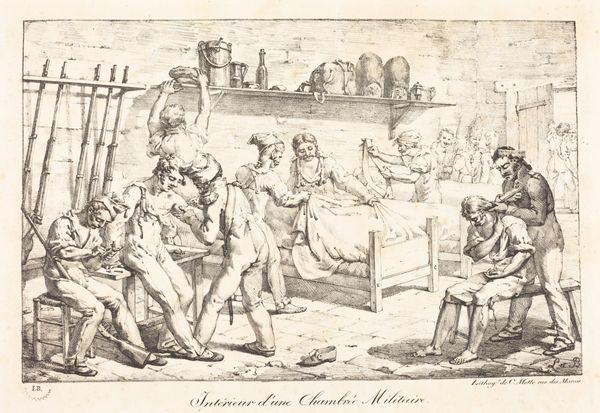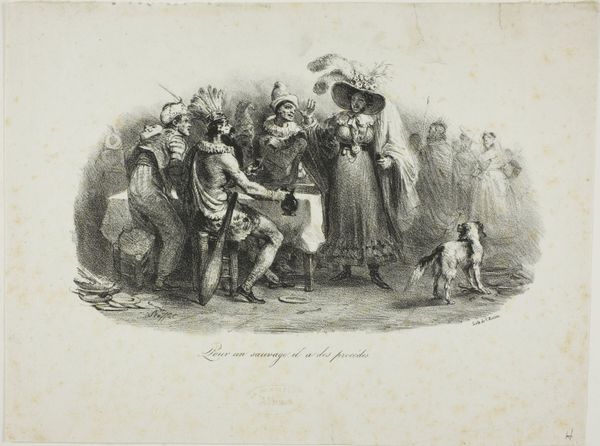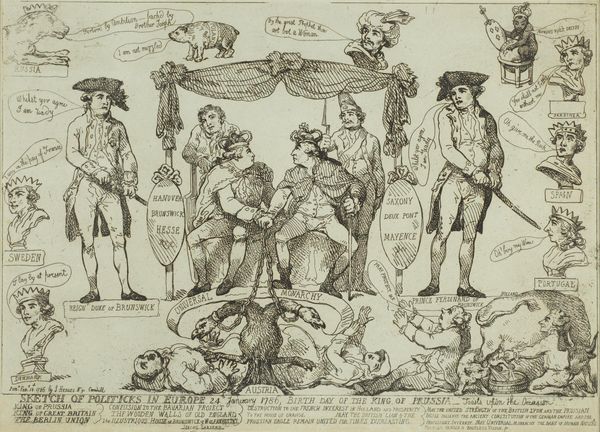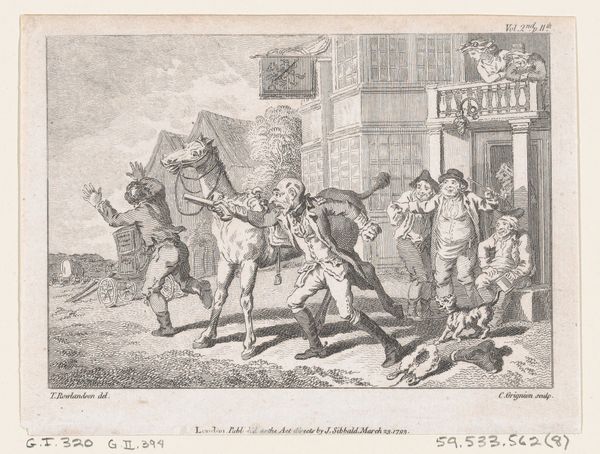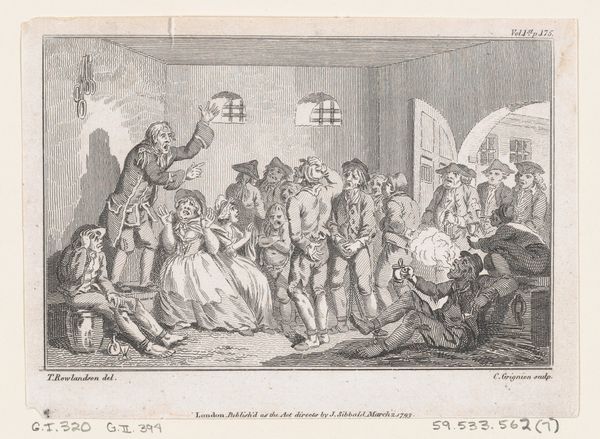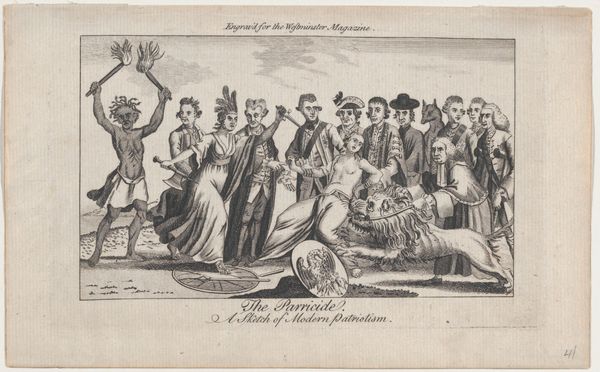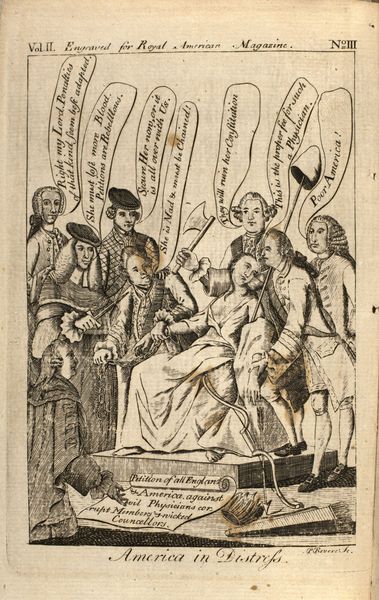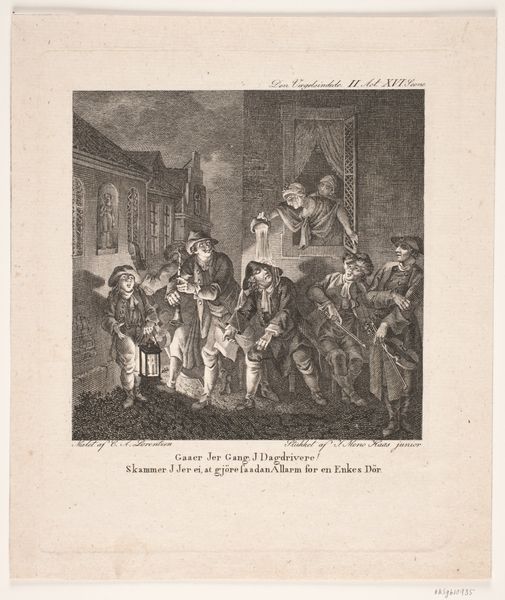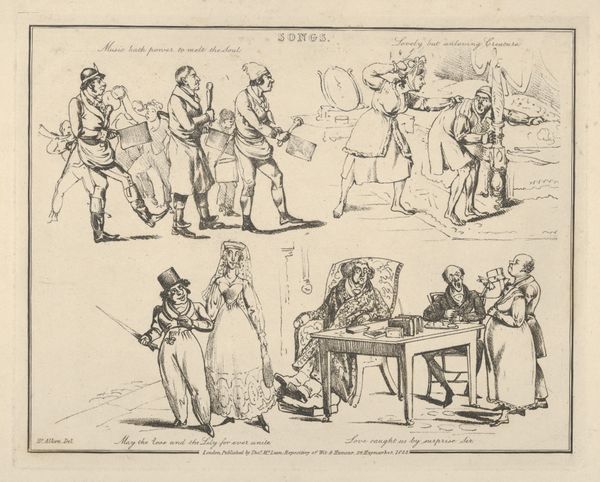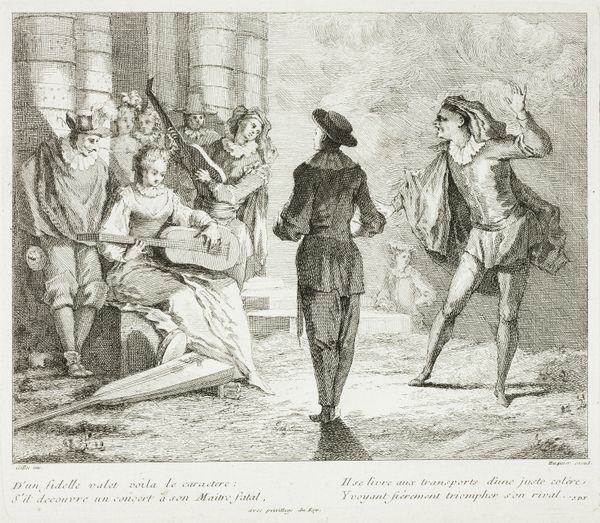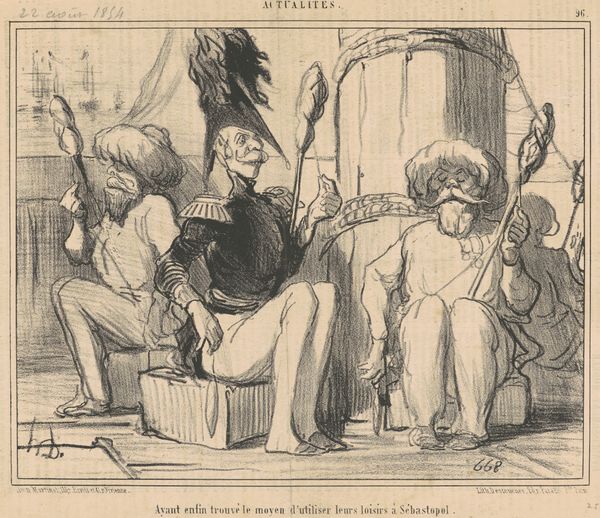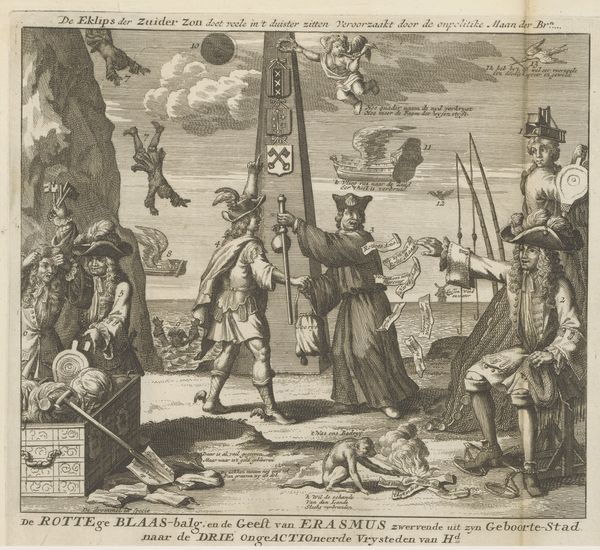
print, engraving
# print
#
caricature
#
history-painting
#
engraving
Copyright: Public domain
Curator: This engraving, titled "The Able Doctor," by Paul Revere, dates to 1774 and appeared in the "Royal American Magazine." What strikes you about it initially? Editor: The imagery is certainly visceral. You have this allegorical figure of America being forcibly fed something, while figures that I presume represent the British leadership look on with varying degrees of concern or outright malicious glee. The whole composition speaks of forced subjugation. Curator: Indeed. This is a piece steeped in political commentary. We see America personified as an Indigenous woman being held down while Lord North forces tea down her throat – a not-so-subtle reference to the Tea Act and the events leading up to the Boston Tea Party. Editor: And it’s particularly unsettling how she's depicted as vulnerable and almost infantilized, doesn't it? I can see the imperialistic mindset at play. She's not a partner in trade; she's property to be controlled. It draws upon much older ideas of feminine allegories needing to be tamed and guided. It says a lot about who has power and how it is deployed. Curator: Note also the presence of Britannia, who averts her gaze, seemingly in distress at the scene unfolding. Revere positions her as either unwilling or unable to stop the forceful actions of the British ministry. The document being brandished in the scene is “Boston Port Bill.” The smoke billowing around the scene reminds us that "Boston is cannonaded". Editor: The visual rhetoric here is so charged. It casts the British ministry as aggressors violating a vulnerable America. It attempts to incite fury in an attempt to unite people toward change, though this imagery can only really engage if viewers are given access to understanding these events as shared and real. Curator: Consider how effectively Revere leverages this emotional impact. This isn't merely a historical record but a call to arms, carefully crafted for public consumption. A lot was at stake and this artwork, mass produced and distributed, had an important role in creating what we can now consider American national consciousness. Editor: Definitely. Looking at the work from our contemporary vantage point, it allows us to consider these themes and narratives about colonial subjugation. Even the caricature serves the specific function of painting these players into "bad guys", solidifying identities and positions. Curator: A potent reminder of art’s enduring ability to shape public opinion, rooted as it is in the political currents of its time. Editor: Yes, "The Able Doctor" showcases a colonial perspective, with layers of narrative for modern analysis through theory.
Comments
No comments
Be the first to comment and join the conversation on the ultimate creative platform.

